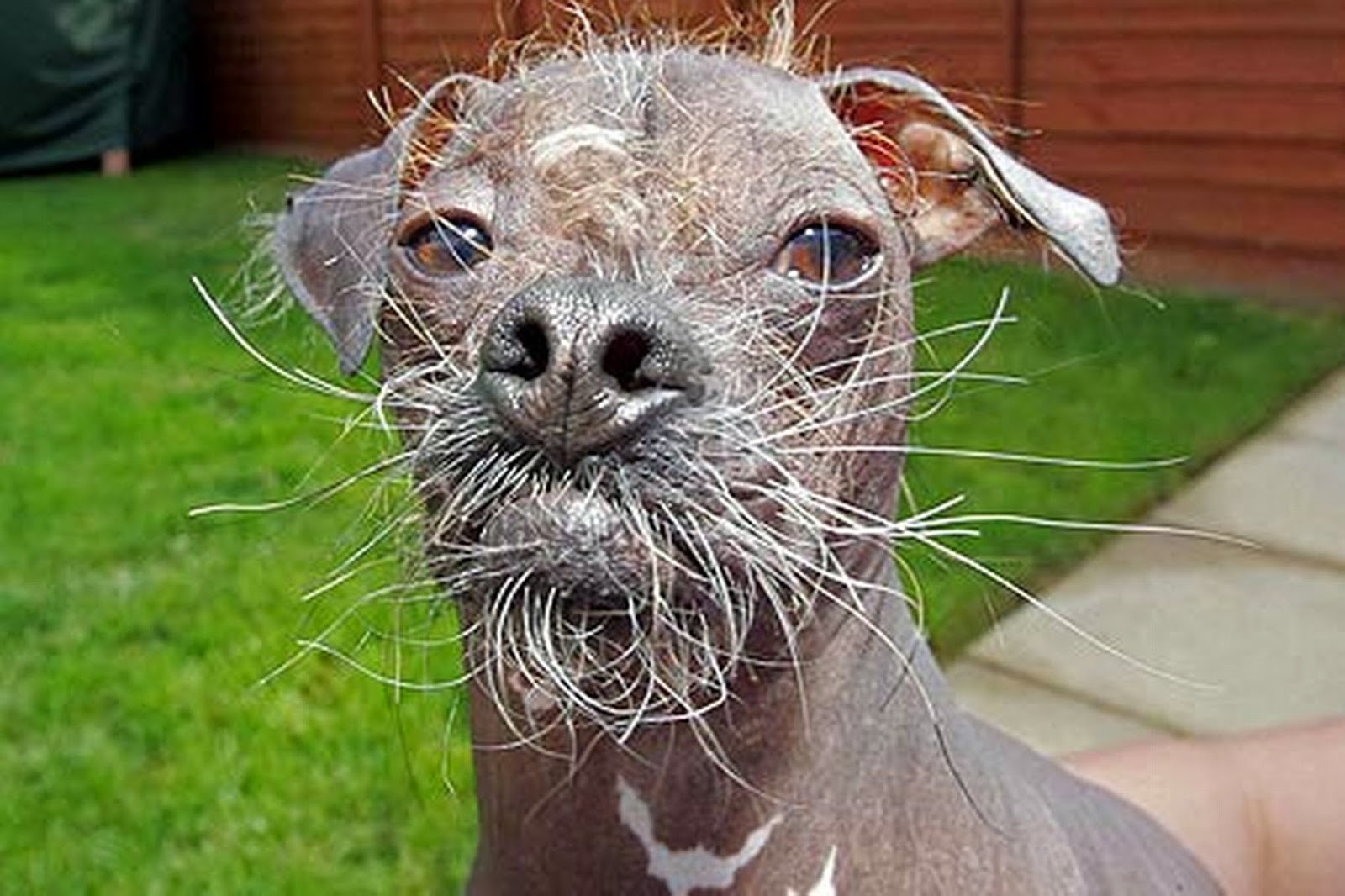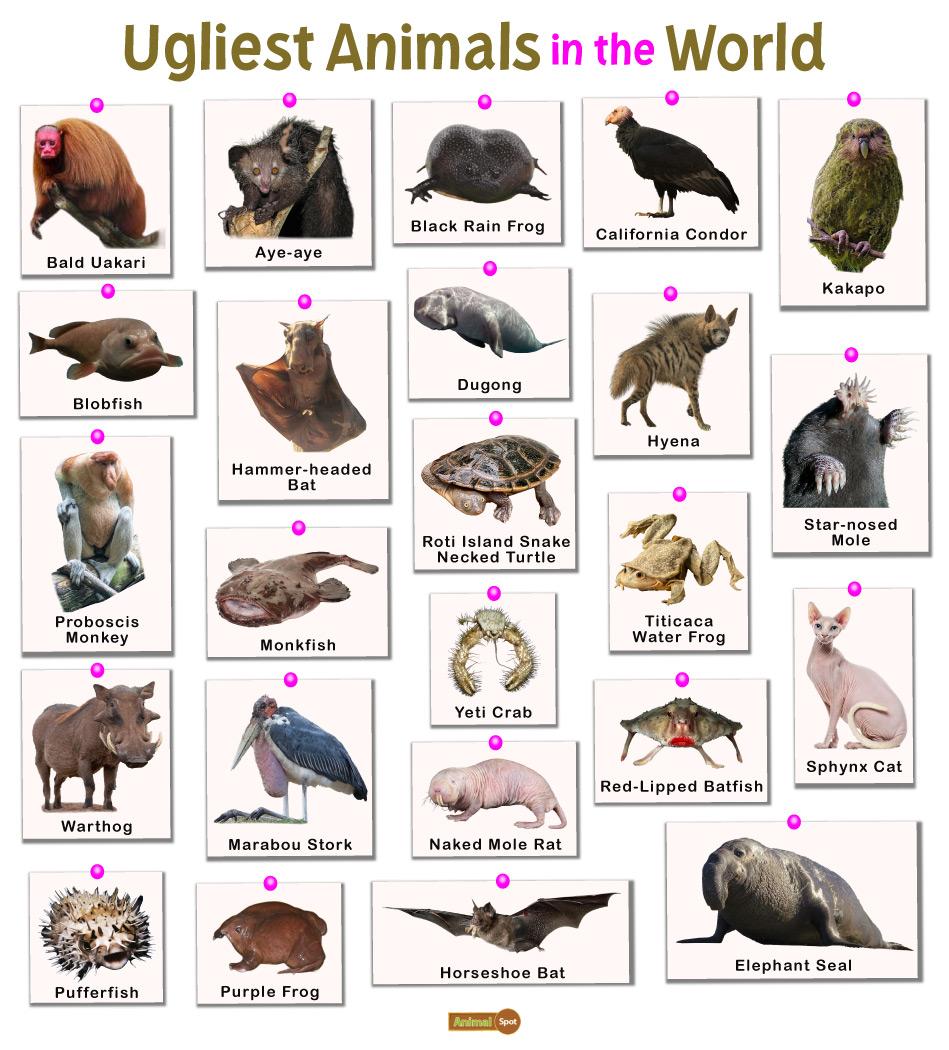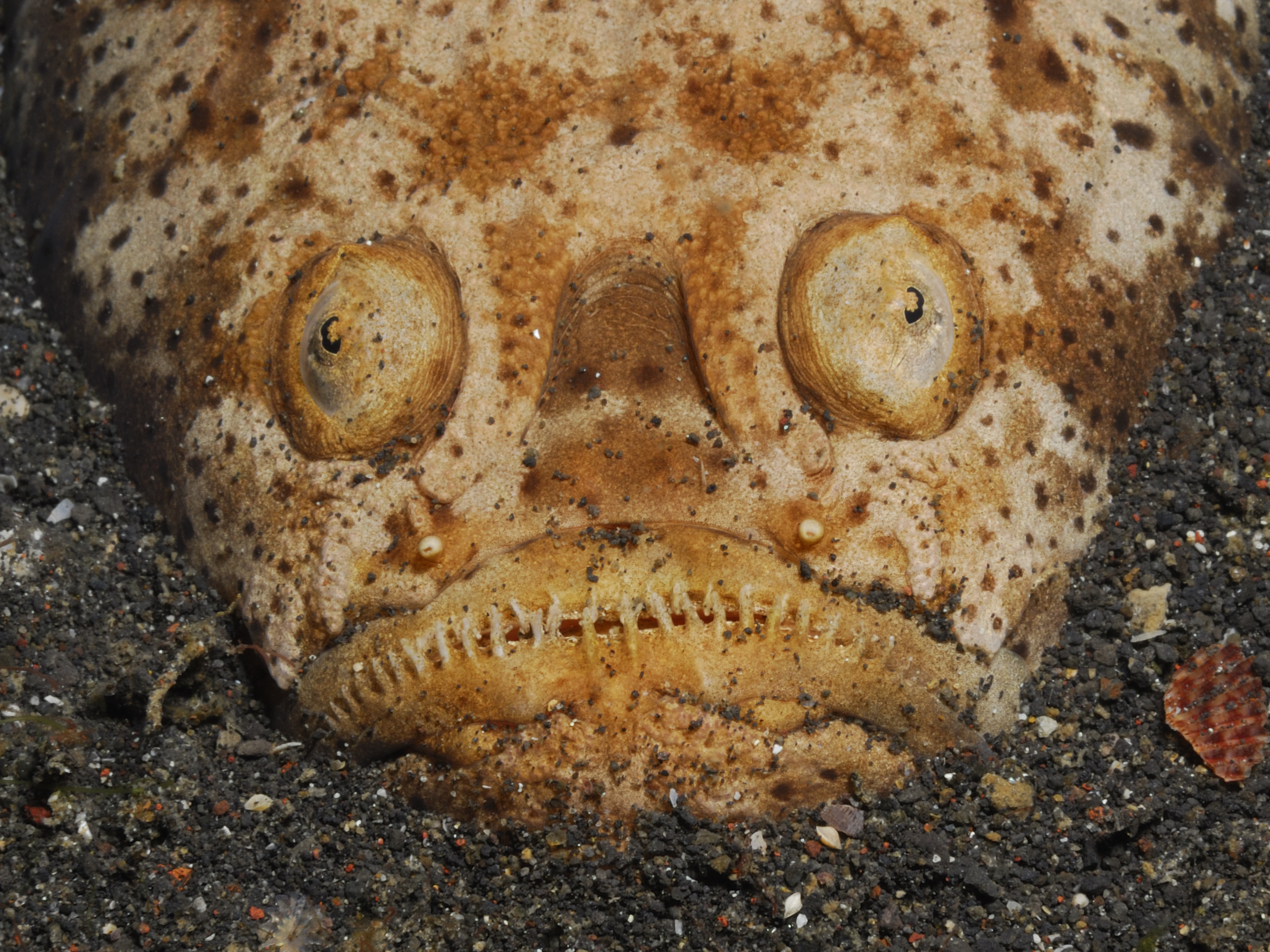Let’s be real here, folks. When we think about animals, we often picture majestic lions, cute pandas, or graceful dolphins. But what about those critters that don’t make it onto the glossy pages of wildlife magazines? Yeah, I’m talking about ugly creatures—the ones that might give you the heebie-jeebies but are actually way more fascinating than you think. So, buckle up, because we’re diving deep into the world of nature’s less-than-beautiful stars.
Now, before you go judging these critters too harshly, let’s talk about why ugly creatures deserve just as much love and respect as their good-looking counterparts. These unsung heroes play a crucial role in ecosystems around the globe. From keeping pest populations in check to breaking down waste, these guys are the real MVPs of the animal kingdom.
So, whether you’re a hardcore nature enthusiast or just someone who’s curious about the weird and wonderful world of wildlife, this article is for you. We’ll be exploring everything you need to know about ugly creatures, including why they’re so important, how they’ve adapted to survive, and why they’re not as scary as they seem. Trust me, by the end of this, you’ll have a newfound appreciation for these misunderstood beauties.
Read also:Is Dawn Staley Married To Lisa Boyer The Truth Behind Their Relationship
What Exactly Are Ugly Creatures?
Alright, let’s break it down. When we talk about ugly creatures, we’re not just talking about animals that don’t win beauty pageants. We’re talking about critters that have evolved to look the way they do for very specific reasons. Some of them might have big, bulging eyes, or skin that looks like it’s been dipped in tar, or teeth that could scare a lion. But here’s the thing: all of those features are there for a purpose.
Defining Ugly Creatures
Let’s get one thing straight—ugly is subjective. What might look terrifying to one person could be fascinating to another. But generally speaking, ugly creatures are animals that don’t fit our traditional notions of beauty. They might have unusual shapes, colors, or features that make them stand out in a not-so-pretty way. Think of the blobfish, the aye-aye, or the star-nosed mole. These guys might not win any beauty contests, but they’re absolutely incredible in their own right.
Why Are Ugly Creatures Important?
Here’s the deal: ugly creatures might not be easy on the eyes, but they’re essential for the health of our planet. These animals play a vital role in maintaining the balance of ecosystems. Without them, things would get pretty messy, pretty fast.
Ecological Contributions
Take vultures, for example. Sure, they might not be the cutest birds out there, but they’re nature’s garbage disposals. They clean up carcasses and prevent the spread of disease. Or what about bats? Yeah, some people think they’re creepy, but they help pollinate plants and control insect populations. And let’s not forget about dung beetles—they might not be the most glamorous creatures, but they’re essential for breaking down waste and returning nutrients to the soil.
The Evolution of Ugly Creatures
So, how did these critters end up looking the way they do? Well, it all comes down to evolution. Over millions of years, animals have adapted to their environments in ways that help them survive. And sometimes, that means developing features that might not be aesthetically pleasing to us humans.
Adaptations for Survival
- Camouflage: Some ugly creatures have developed colors and patterns that help them blend into their surroundings, making them harder for predators to spot.
- Defensive Features: Others have evolved features like spines, spikes, or venom to protect themselves from threats.
- Hunting Techniques: Certain ugly creatures have developed unique ways of catching prey, like the anglerfish with its bioluminescent lure.
Common Misconceptions About Ugly Creatures
Let’s face it—there are a lot of myths and misconceptions surrounding ugly creatures. People often assume that because these animals look weird or scary, they must be dangerous. But that’s not always the case. In fact, many of these critters are harmless and even beneficial to humans.
Read also:How Old Is C Blu Unveiling The Age And Journey Of A Rising Star
Debunking the Myths
Take the blobfish, for example. This poor guy has been labeled as the "world’s ugliest animal," but he’s actually a pretty chill dude. He lives in the deep ocean and spends most of his time just floating around, minding his own business. Or what about the naked mole-rat? Yeah, it’s not the prettiest creature out there, but it’s one of the most fascinating animals on the planet. These little guys are virtually immune to cancer and can survive without oxygen for extended periods of time.
The Role of Ugly Creatures in Human Culture
Believe it or not, ugly creatures have played a significant role in human culture throughout history. From folklore to modern-day pop culture, these animals have inspired stories, art, and even scientific discoveries.
Cultural Significance
In some cultures, ugly creatures are seen as symbols of wisdom, strength, or resilience. For example, in ancient Egypt, the scarab beetle was considered a sacred symbol of rebirth and regeneration. And let’s not forget about the mythical creatures like dragons and griffins, which were often depicted as powerful and majestic beings.
Conservation Efforts for Ugly Creatures
Unfortunately, many ugly creatures are at risk of extinction due to habitat loss, climate change, and human activities. But there are efforts underway to protect these amazing animals and ensure their survival for future generations.
Protecting Our Unsung Heroes
Organizations like the Ugly Animal Preservation Society are working to raise awareness about the importance of ugly creatures and the need to conserve them. They’re also partnering with scientists, conservationists, and local communities to develop strategies for protecting these animals and their habitats.
Fun Facts About Ugly Creatures
Ready for some mind-blowing facts about ugly creatures? Here are a few to get you started:
- The axolotl, a type of salamander, can regenerate entire limbs, spinal cord, and even parts of its brain.
- The anglerfish has a bioluminescent lure that it uses to attract prey in the deep ocean.
- The star-nosed mole has the fastest mammalian reaction time, able to identify and eat prey in just 230 milliseconds.
How You Can Help Protect Ugly Creatures
So, now that you know how amazing ugly creatures are, what can you do to help protect them? There are plenty of ways to get involved, from supporting conservation organizations to making simple changes in your daily life.
Take Action
- Donate to organizations that focus on conserving ugly creatures and their habitats.
- Reduce your carbon footprint to help combat climate change, which is a major threat to many species.
- Spread the word about the importance of ugly creatures and why they deserve our protection.
Conclusion
Let’s recap for a sec. Ugly creatures might not be the prettiest animals out there, but they’re absolutely vital for the health of our planet. From keeping ecosystems balanced to inspiring scientific discoveries, these critters are way more important than they get credit for.
So, what can you do? First, share this article with your friends and family to help spread the word about the importance of ugly creatures. Second, consider supporting conservation efforts to protect these amazing animals. And finally, remember that beauty comes in all shapes and sizes—sometimes, the ugliest creatures are the most fascinating ones of all.
Now it’s your turn. Leave a comment below and let me know which ugly creature is your favorite. Or, if you’re feeling extra inspired, share this article on social media and help us celebrate nature’s less-than-beautiful stars!
Table of Contents


